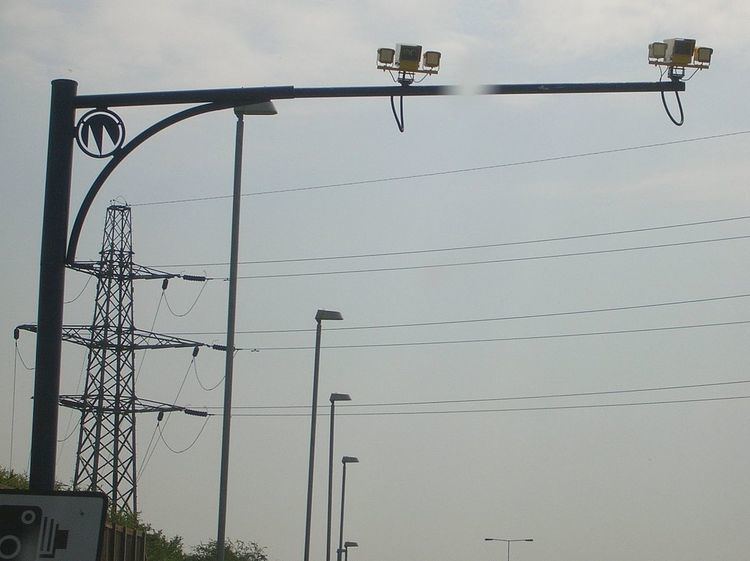 | ||
SPECS is an average speed measuring speed camera system originally manufactured by Speed Check Services Limited, from which it takes its name. It is one of the systems used for speed limit enforcement in the United Kingdom. Speed Check Services was acquired by Vysionics in 2010.
Contents
SPECS cameras were introduced in 1999.
About SPECS cameras
SPECS cameras operate as sets of two or more cameras installed along a fixed route that can be from 200 metres (660 feet) to 10 kilometres (6.2 mi) in length. They work by using an automatic number plate recognition (ANPR) system to record a vehicle's front number plate at each fixed camera site. As the distance is known between these sites, the average speed can be calculated by dividing this by the time taken to travel between two points. The cameras use infrared photography, allowing them to operate both day and night.
There is a popular misconception that the Home Office has approved the SPECS system for single-lane use only. According to this theory, a motorist can therefore switch lanes between cameras and claim non-approval to avoid prosecution for speeding.
Although it is true that the single lane use is not part of the type approval of the camera system. It is a limitation of the technology.
The system design is such that the cameras can only operate in pairs, each pair can only monitor one lane of a multi lane road. It is therefore, at least in theory, possible to escape detection by changing lanes between the entry and exit cameras since the exit will be captured by the exit camera of a different pair. However, in reality, the authorities are able to easily defeat this tactic by arranging for two or more sets of pairs of cameras to have overlapping areas of monitoring. Since the driver cannot tell which cameras are 'entry' and which are 'exit', as they look identical, they cannot tell where to change lane to escape detection.
The system has another deficiency in that since the cameras only read the front number plate of a vehicle, speeding motorcycles escape detection because they have no front number plate to read.
The cameras are often painted yellow and have been given the nickname "yellow vultures".
Incidents
In February 2007 a letter bomb exploded at the accountants of Speed Check Services Limited in what was believed to be an attack on organisations related to DNA testing and road transport.
Similar systems in other countries
Similar systems are being used in other countries:
